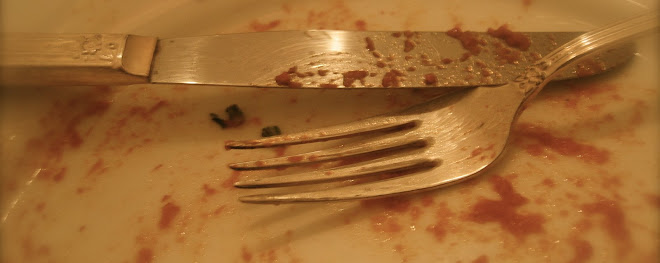Here's NY Times Reporter
Nicolas Kristof's update on
Beatrice Biira. For those of you who haven't teared up over the picture book
Beatrice's Goat, I'll give you the back story. Beatrice and her Ugandan family received a goat from
Heifer International. The goat was the leg up that her family needed to become more self-sufficient and enabled Beatrice to attend school. Kristof, who persists in telling the stories that aren't always on the 24/7 news radar,shows how individuals (like you, like me) can change the world. I'm not kidding.
Printed from the July 3, 2008 New York Times:
OP-ED COLUMNIST
The Luckiest GirlBy NICHOLAS D. KRISTOF
This year’s college graduates owe their success to many factors, from hectoring parents to cherished remedies for hangovers. But one of the most remarkable of the new graduates, Beatrice Biira, credits something utterly improbable: a goat.
“I am one of the luckiest girls in the world,” Beatrice declared at her graduation party after earning her bachelor’s degree from Connecticut College. Indeed, and it’s appropriate that the goat that changed her life was named Luck.
Beatrice’s story helps address two of the most commonly asked questions about foreign assistance: “Does aid work?” and “What can I do?”
The tale begins in the rolling hills of western Uganda, where Beatrice was born and raised. As a girl, she desperately yearned for an education, but it seemed hopeless: Her parents were peasants who couldn’t afford to send her to school.
The years passed and Beatrice stayed home to help with the chores. She was on track to become one more illiterate African woman, another of the continent’s squandered human resources.
In the meantime, in Niantic, Conn., the children of the Niantic Community Church wanted to donate money for a good cause. They decided to buy goats for African villagers through Heifer International, a venerable aid group based in Arkansas that helps impoverished farming families.
A dairy goat in Heifer’s online gift catalog costs $120; a flock of chicks or ducklings costs just $20.
One of the goats bought by the Niantic church went to Beatrice’s parents and soon produced twins. When the kid goats were weaned, the children drank the goat’s milk for a nutritional boost and sold the surplus milk for extra money.
The cash from the milk accumulated, and Beatrice’s parents decided that they could now afford to send their daughter to school. She was much older than the other first graders, but she was so overjoyed that she studied diligently and rose to be the best student in the school.
An American visiting the school was impressed and wrote a children’s book, “Beatrice’s Goat,” about how the gift of a goat had enabled a bright girl to go to school. The book was published in 2000 and became a children’s best seller — but there is now room for a more remarkable sequel.
Beatrice was such an outstanding student that she won a scholarship, not only to Uganda’s best girls’ high school, but also to a prep school in Massachusetts and then to Connecticut College. A group of 20 donors to Heifer International — coordinated by a retired staff member named Rosalee Sinn, who fell in love with Beatrice when she saw her at age 10 — financed the girl’s living expenses.
A few years ago, Beatrice spoke at a Heifer event attended by Jeffrey Sachs, the economist. Mr. Sachs was impressed and devised what he jokingly called the “Beatrice Theorem” of development economics: small inputs can lead to large outcomes.
Granted, foreign assistance doesn’t always work and is much harder than it looks. “I won’t lie to you. Corruption is high in Uganda,” Beatrice acknowledges.
A crooked local official might have distributed the goats by demanding that girls sleep with him in exchange. Or Beatrice’s goat might have died or been stolen. Or unpasteurized milk might have sickened or killed Beatrice.
In short, millions of things could go wrong. But when there’s a good model in place, they often go right. That’s why villagers in western Uganda recently held a special Mass and a feast to celebrate the first local person to earn a college degree in America.
Moreover, Africa will soon have a new asset: a well-trained professional to improve governance. Beatrice plans to earn a master’s degree at the Clinton School of Public Service in Arkansas and then return to Africa to work for an aid group.
Beatrice dreams of working on projects to help women earn and manage money more effectively, partly because she has seen in her own village how cash is always controlled by men. Sometimes they spent it partying with buddies at a bar, rather than educating their children. Changing that culture won’t be easy, Beatrice says, but it can be done.
When people ask how they can help in the fight against poverty, there are a thousand good answers, from sponsoring a child to supporting a grass-roots organization through globalgiving.com. (I’ve listed specific suggestions on my blog, nytimes.com/ontheground, and on facebook.com/kristof).
The challenges of global poverty are vast and complex, far beyond anyone’s power to resolve, and buying a farm animal for a poor family won’t solve them. But Beatrice’s giddy happiness these days is still a reminder that each of us does have the power to make a difference — to transform a girl’s life with something as simple and cheap as a little goat.
[Kristof invites you to comment on this column on his blog, www.nytimes.com/ontheground, and join him on Facebook at www.facebook.com/kristof]

 The salad is problematic for “localvores” unless you live in both Italy and Spain; you see I have only been able to find farro made in Italy and Manchego cheese made in Spain. But I compensated by getting the red peppers at the local farmer’s market and the basil even closer – my own backyard. I can live with that trade off for now.
The salad is problematic for “localvores” unless you live in both Italy and Spain; you see I have only been able to find farro made in Italy and Manchego cheese made in Spain. But I compensated by getting the red peppers at the local farmer’s market and the basil even closer – my own backyard. I can live with that trade off for now.








